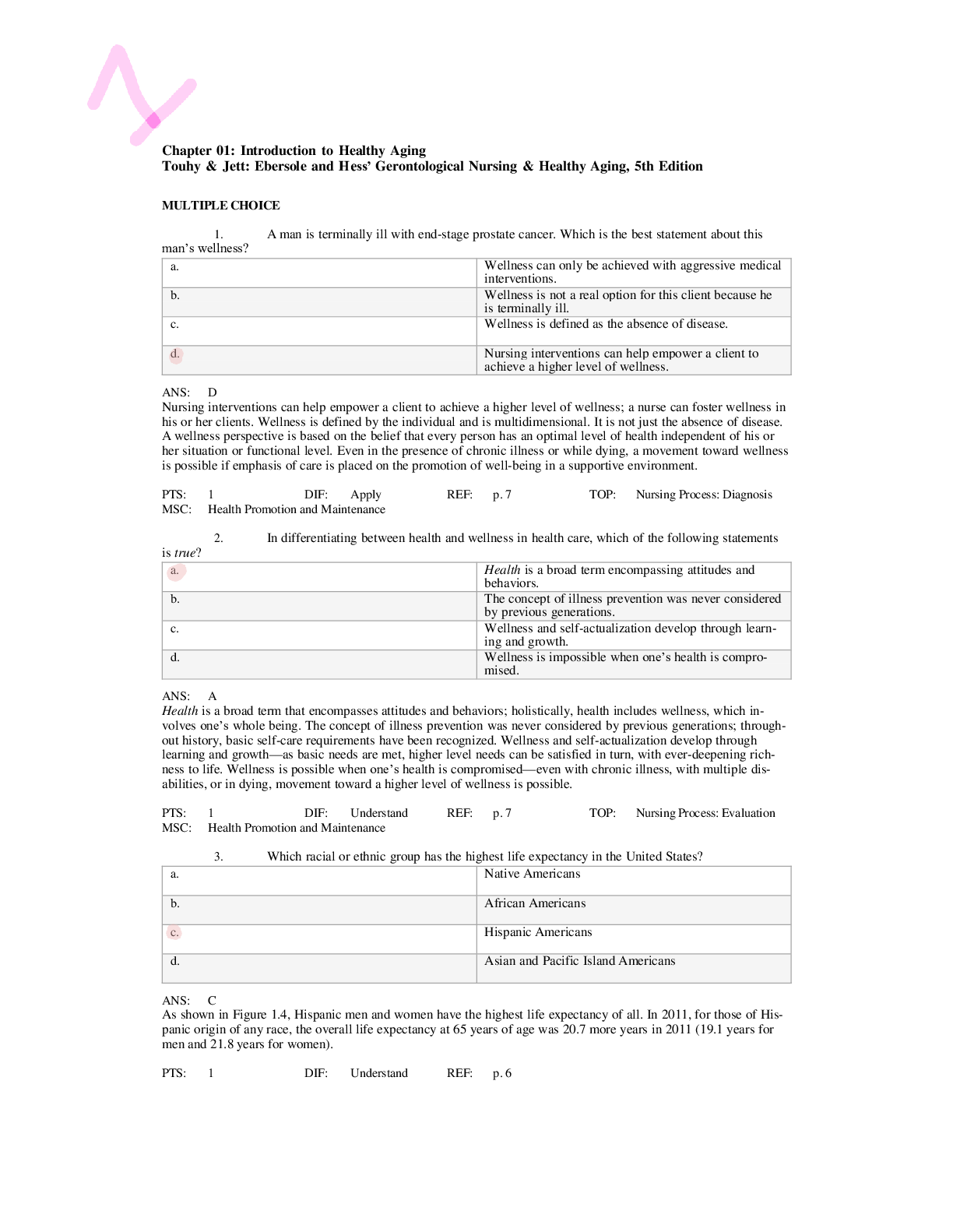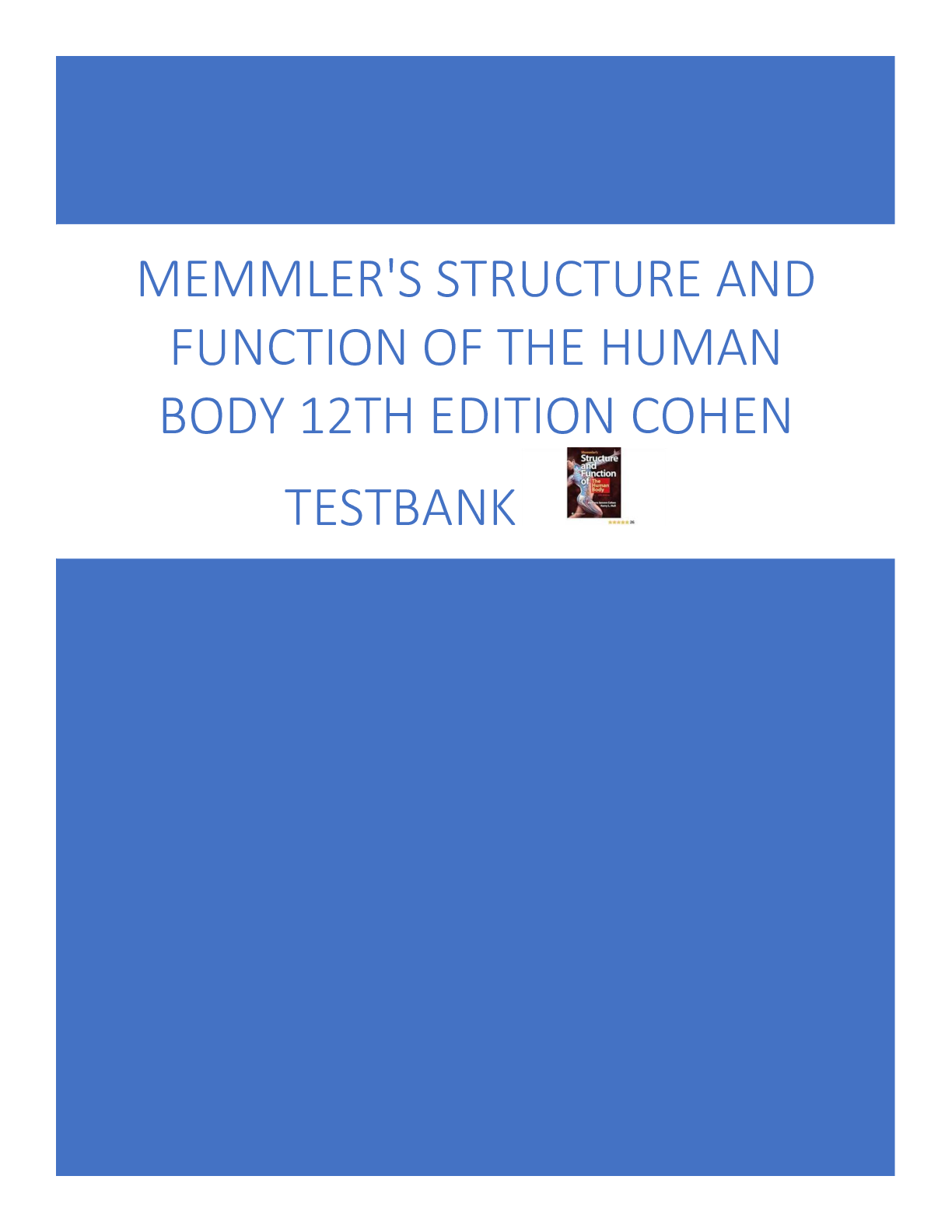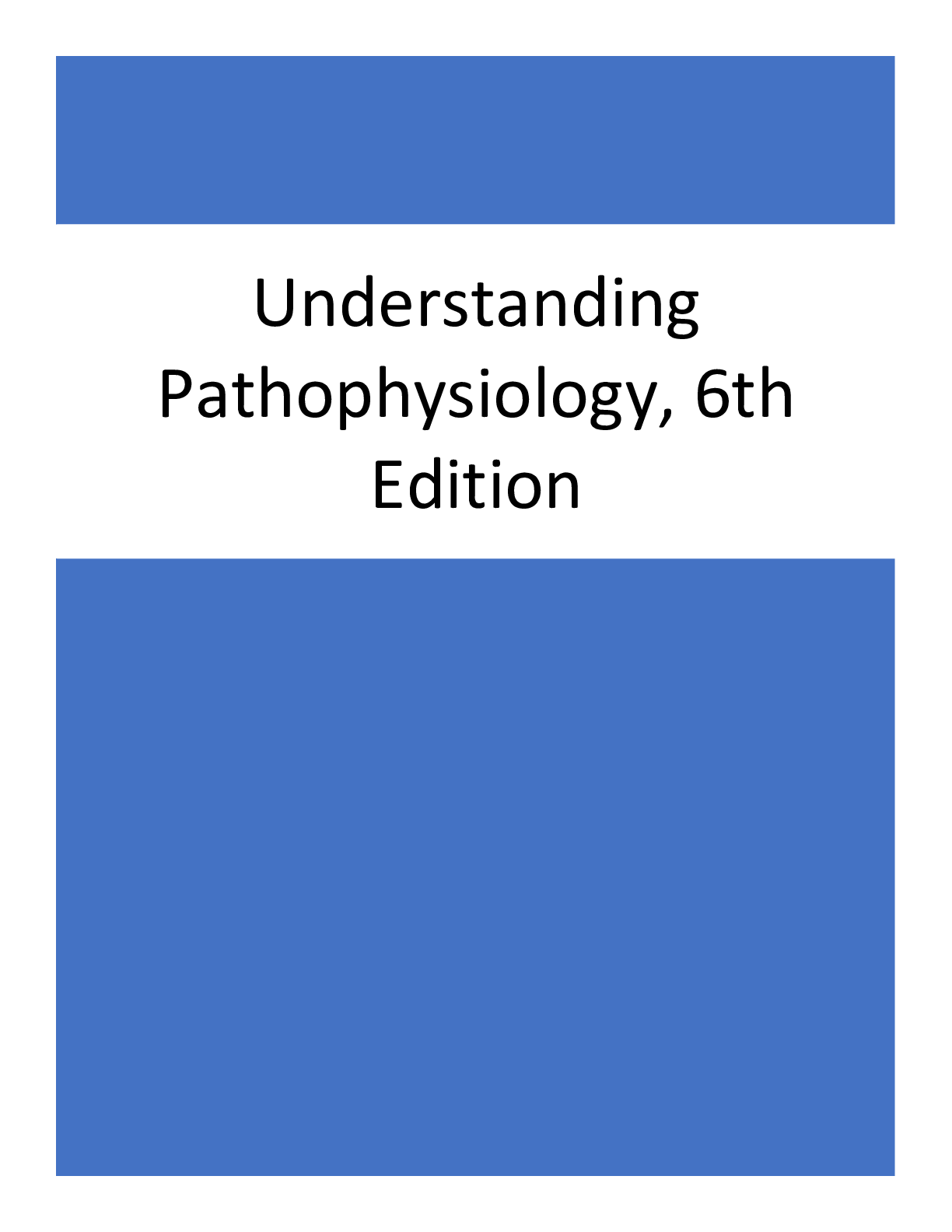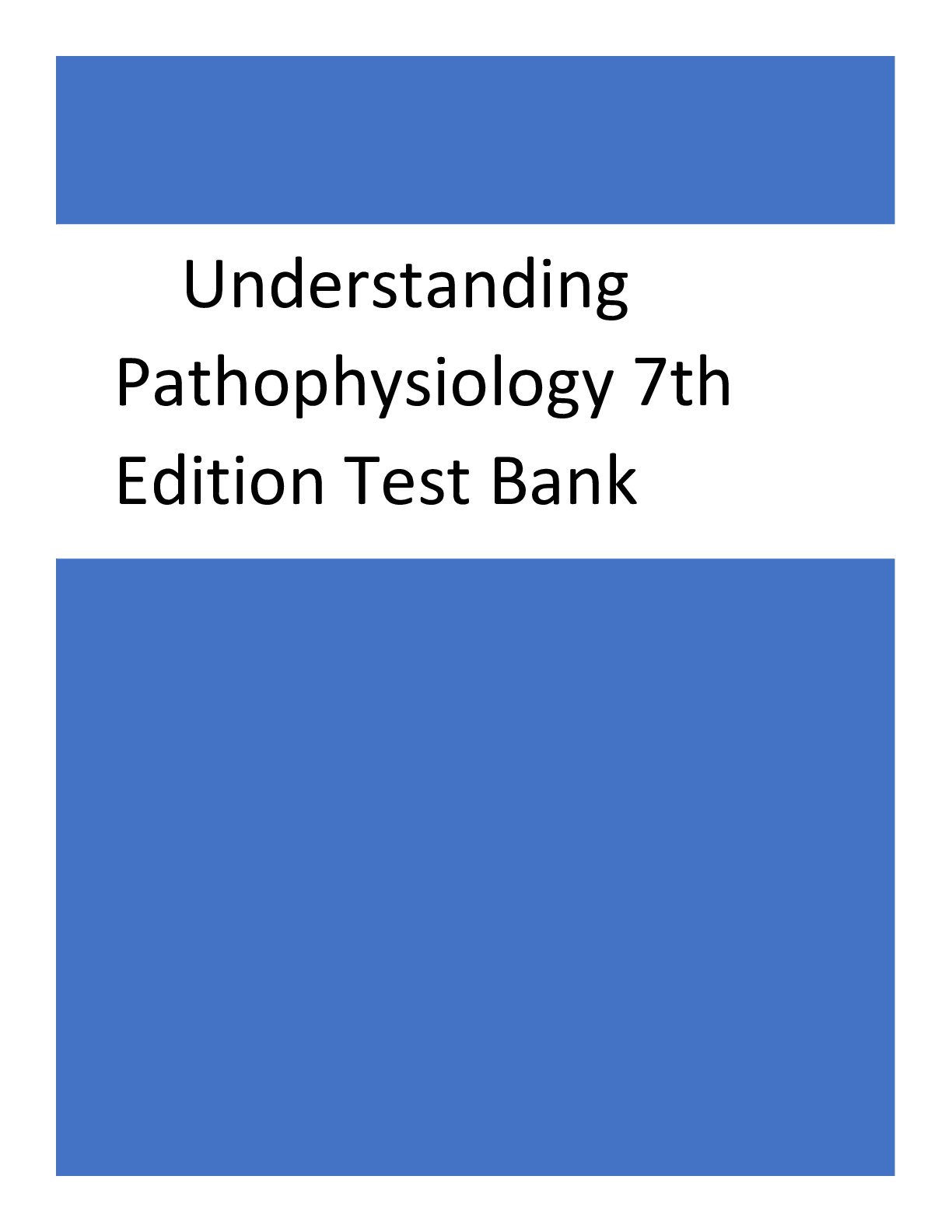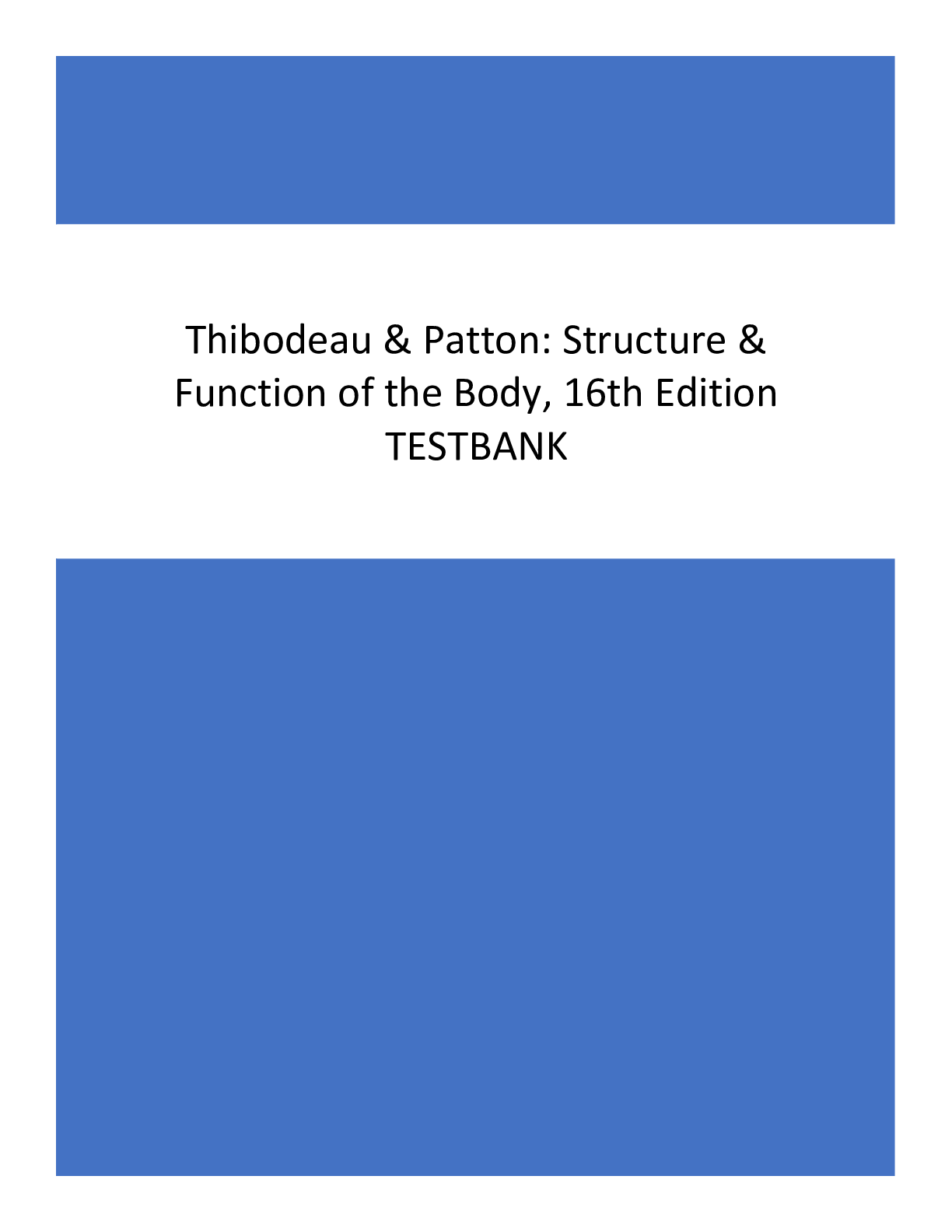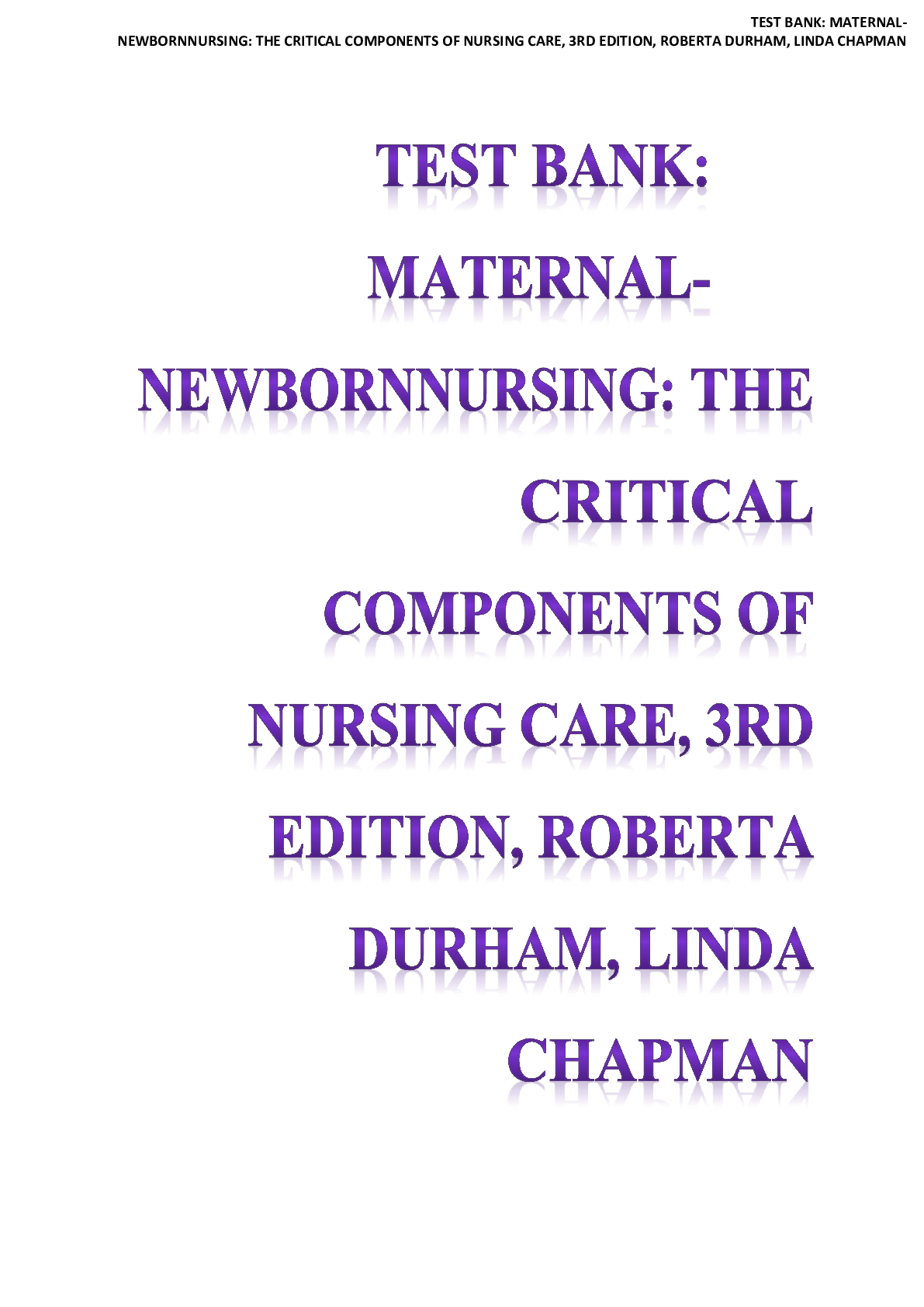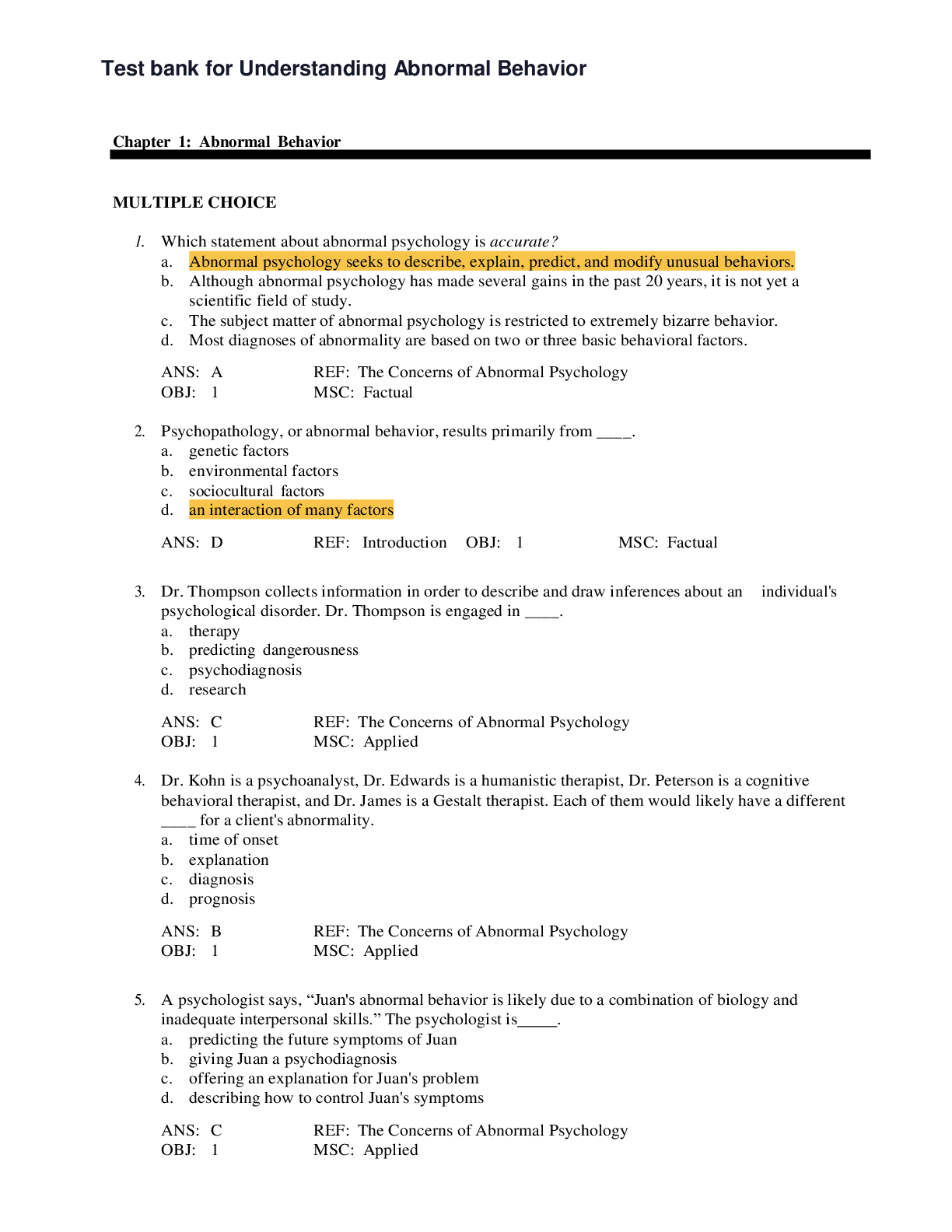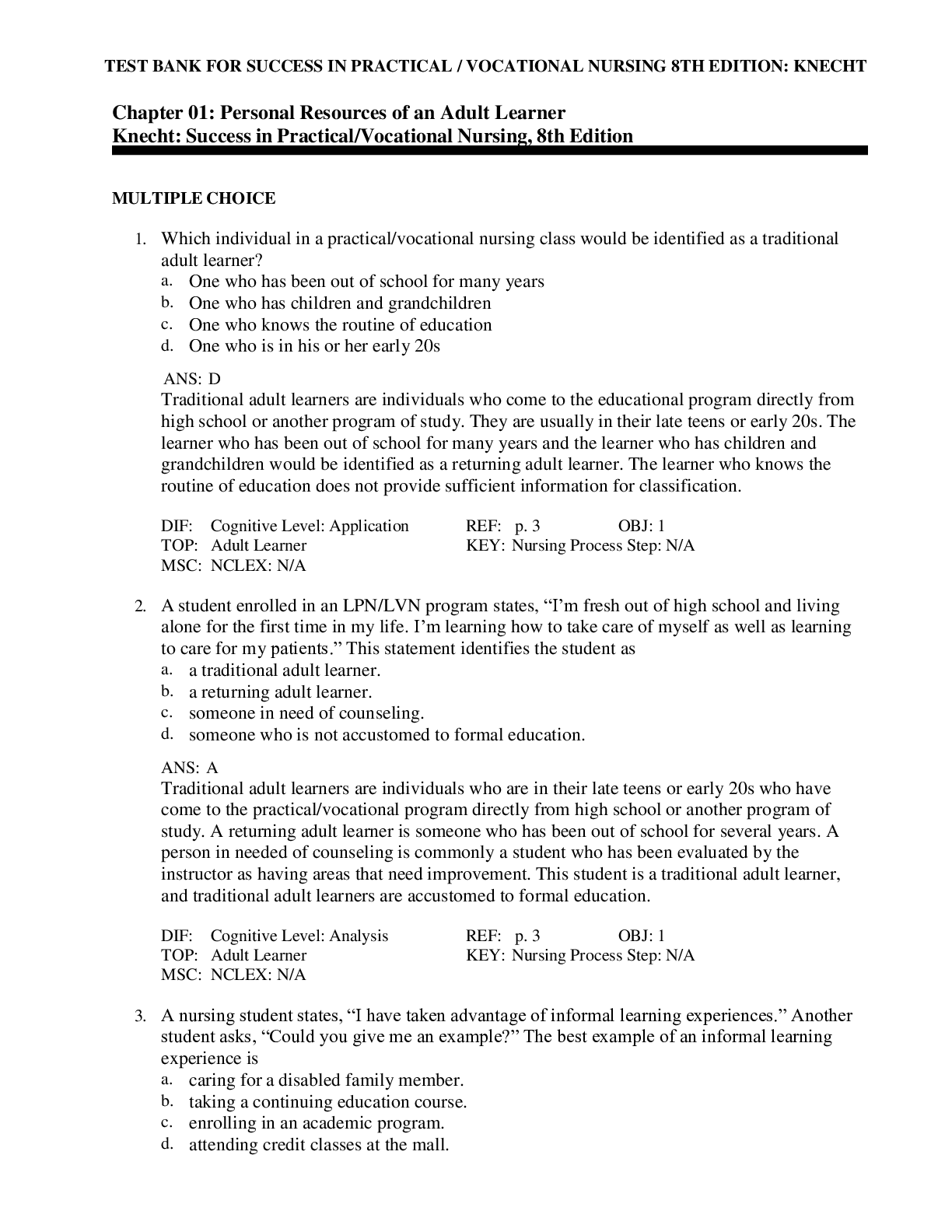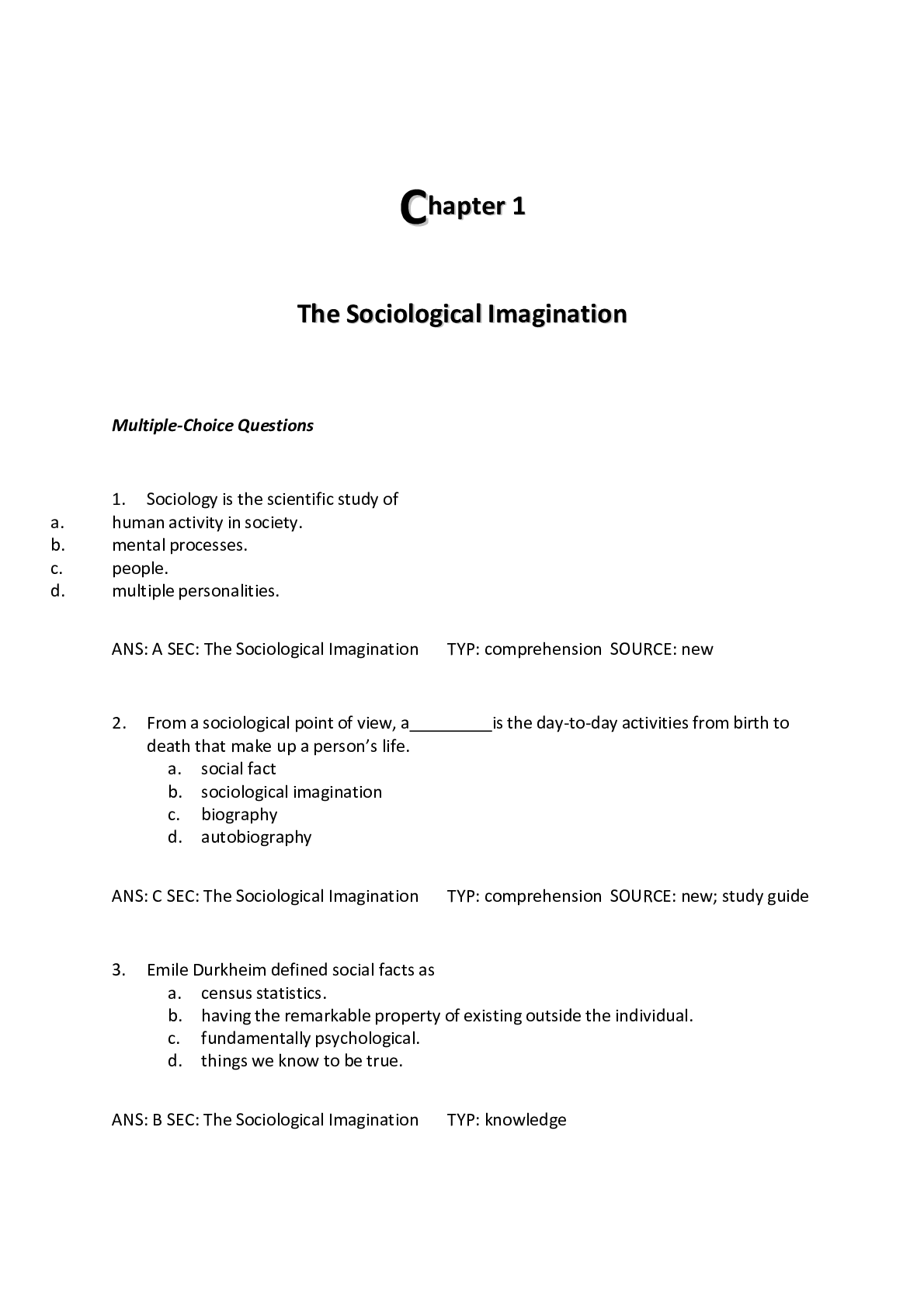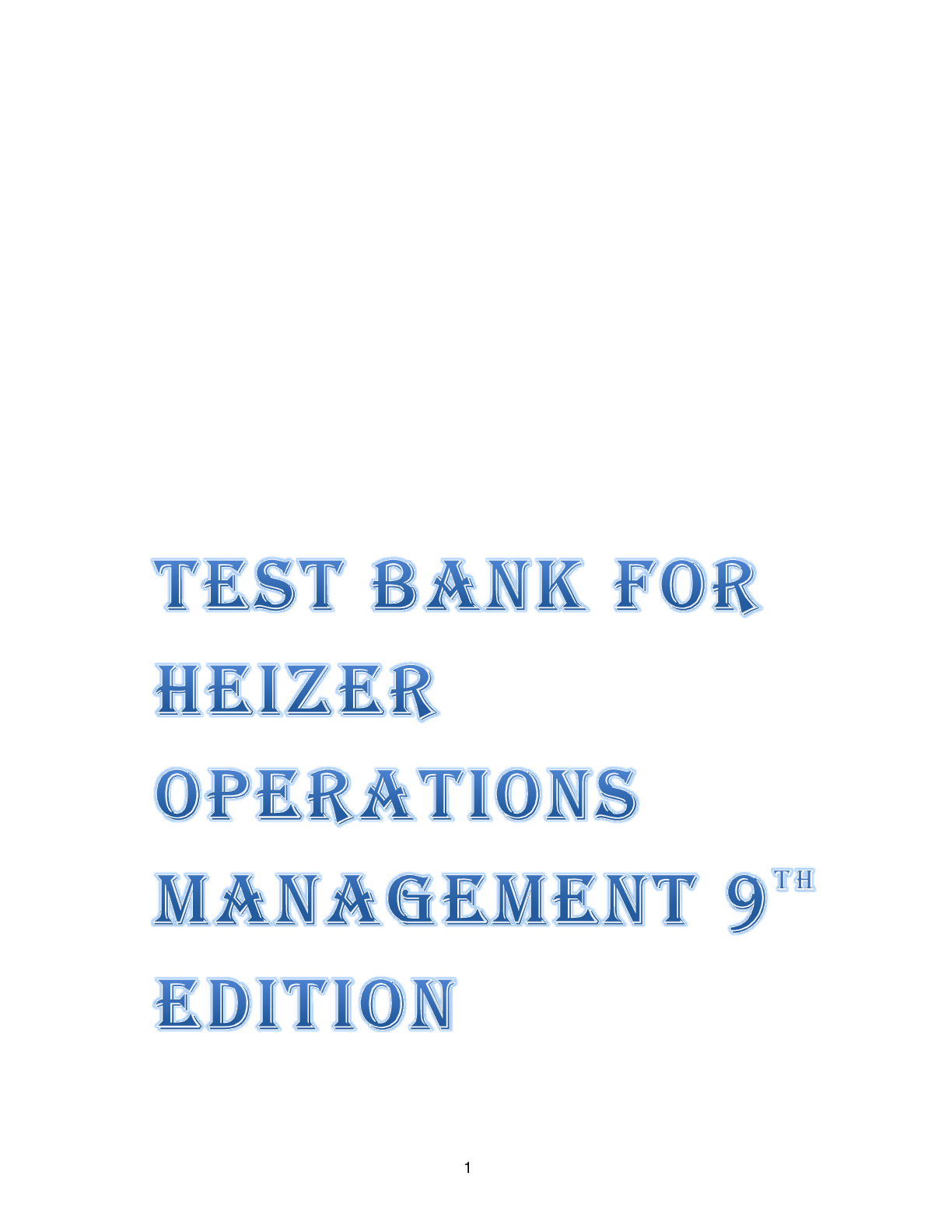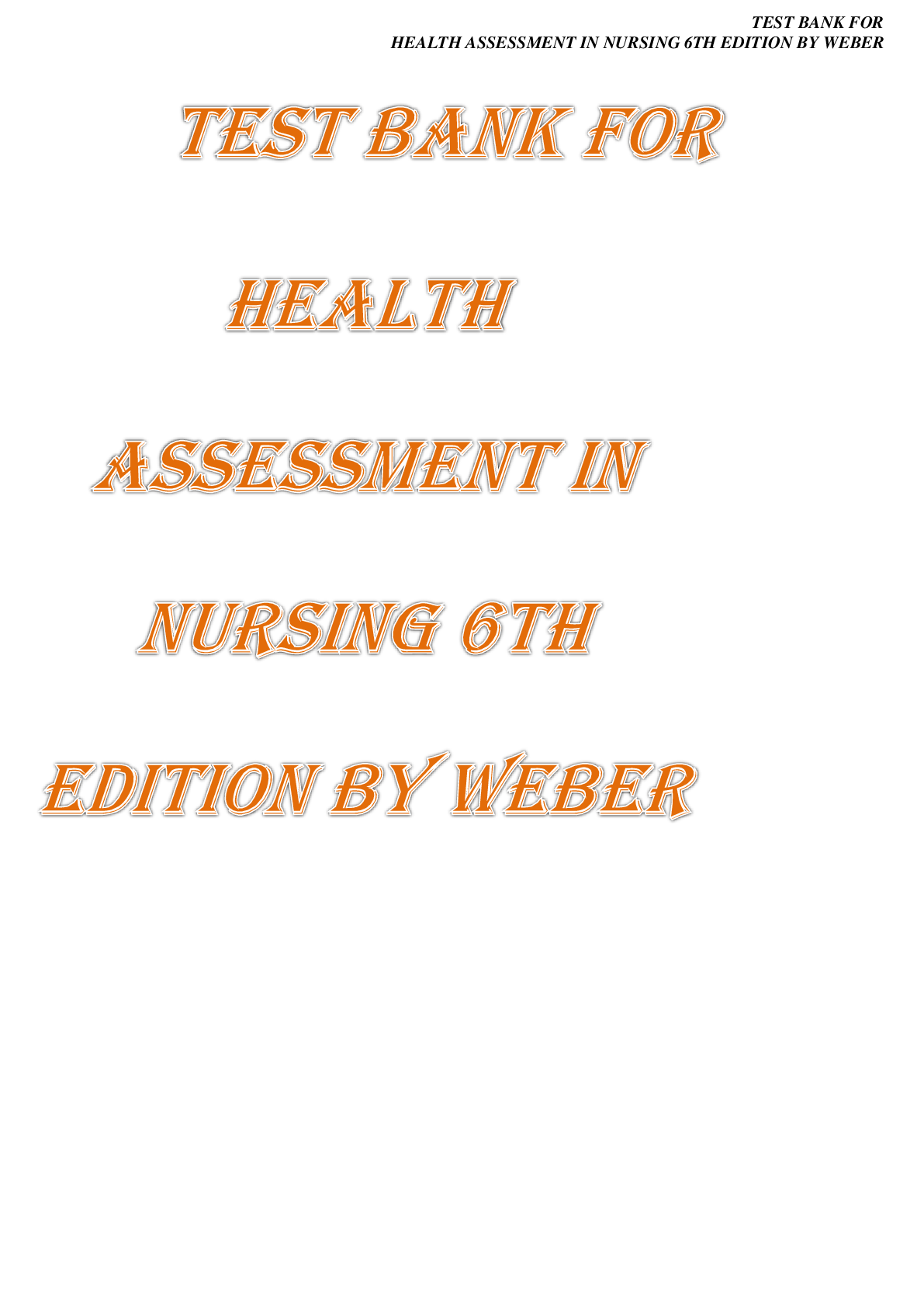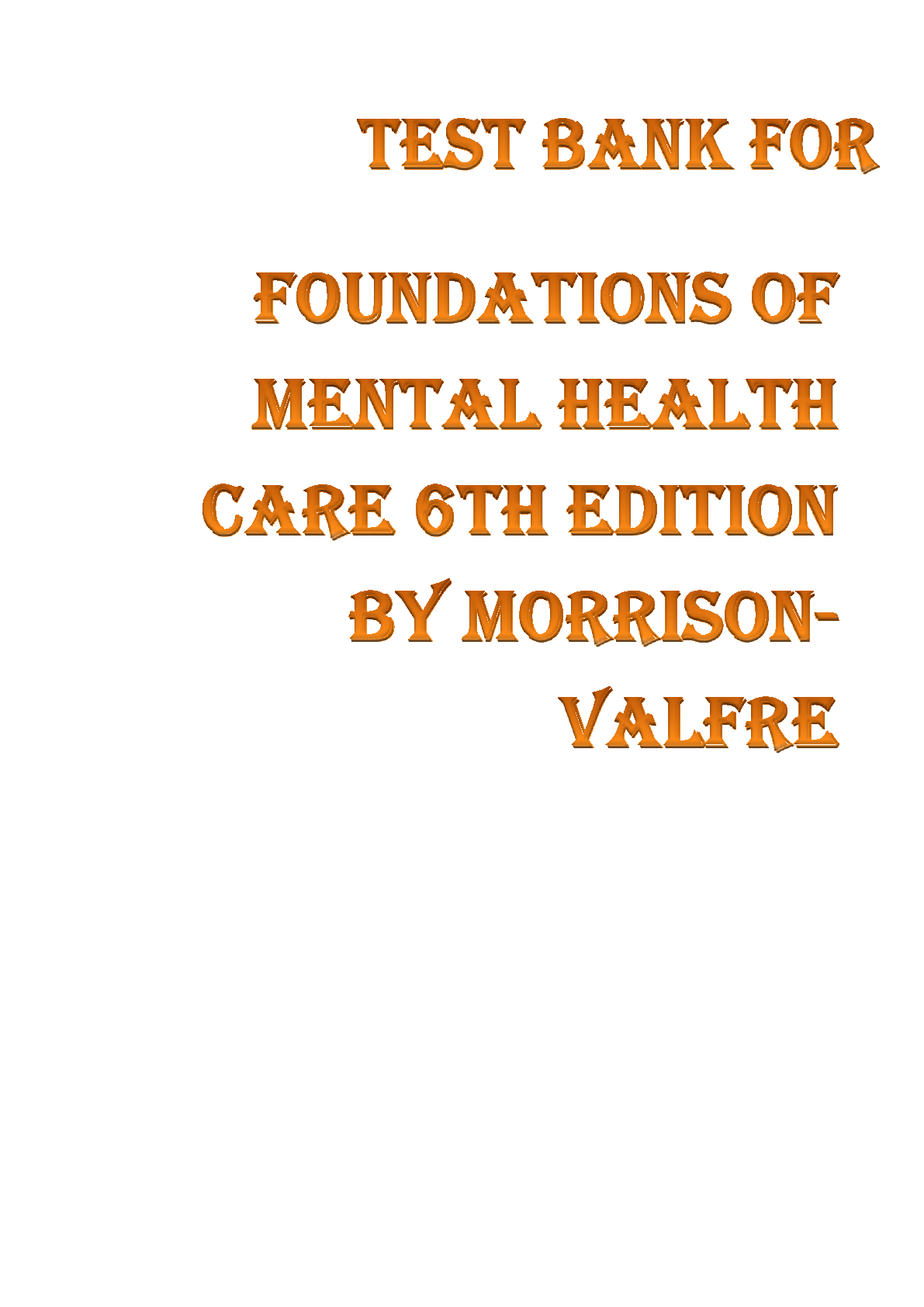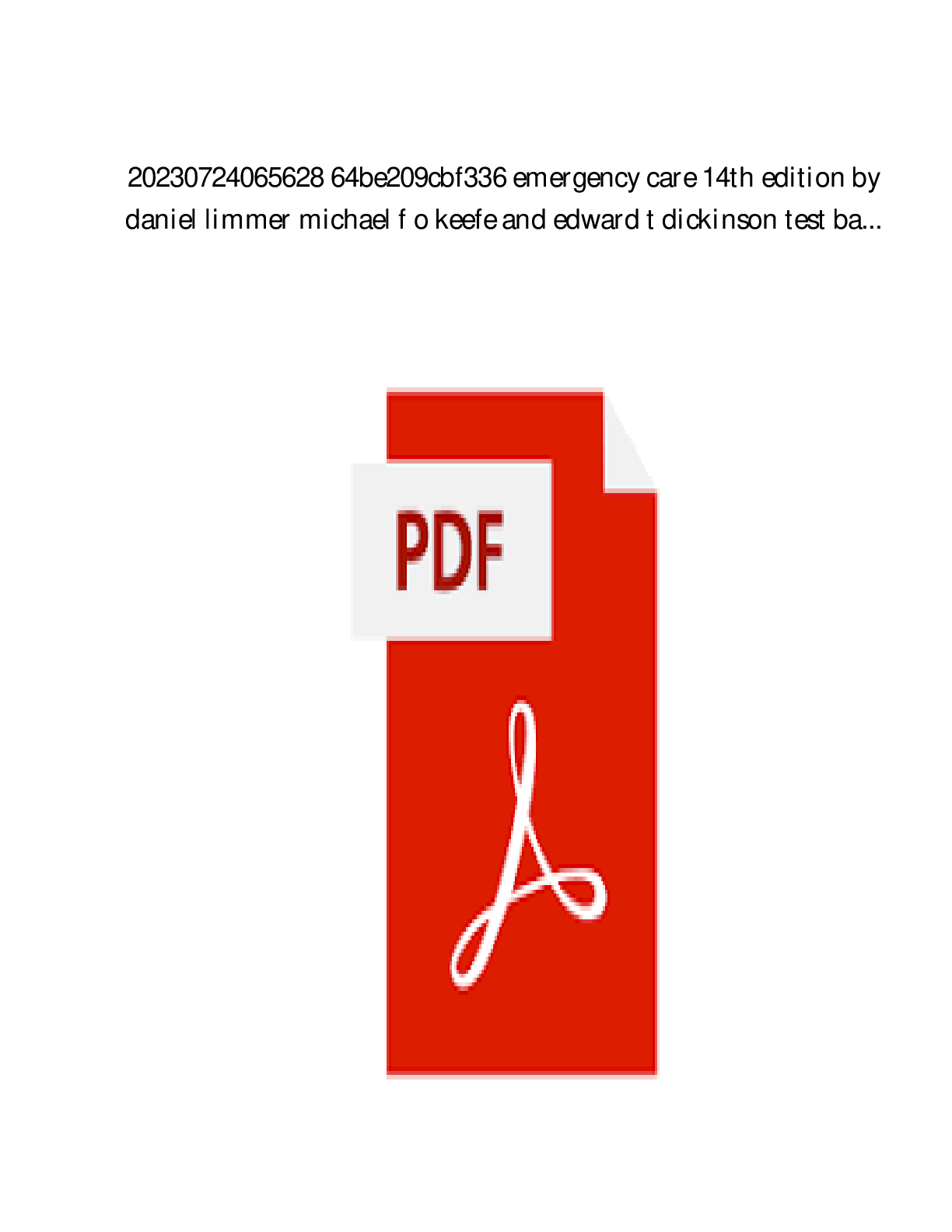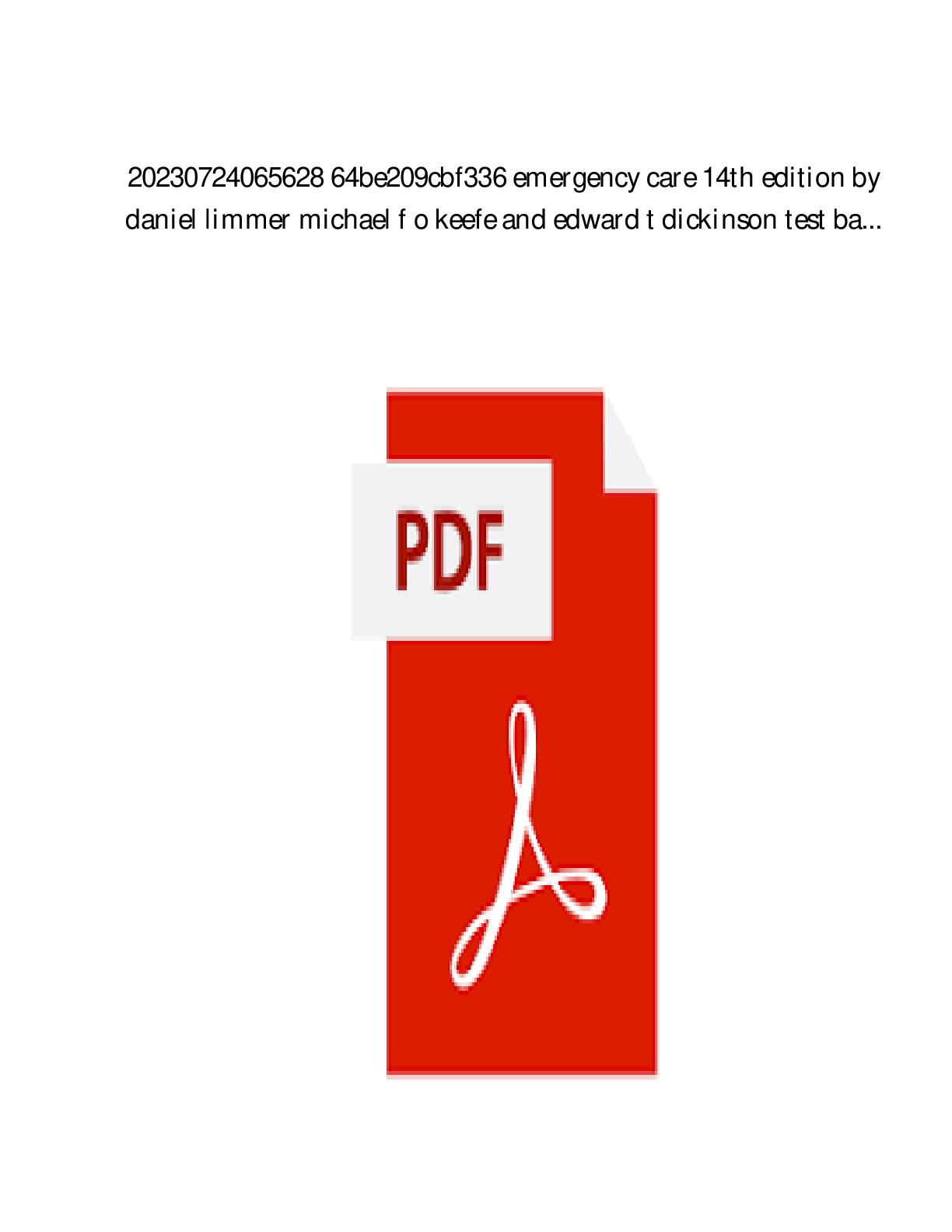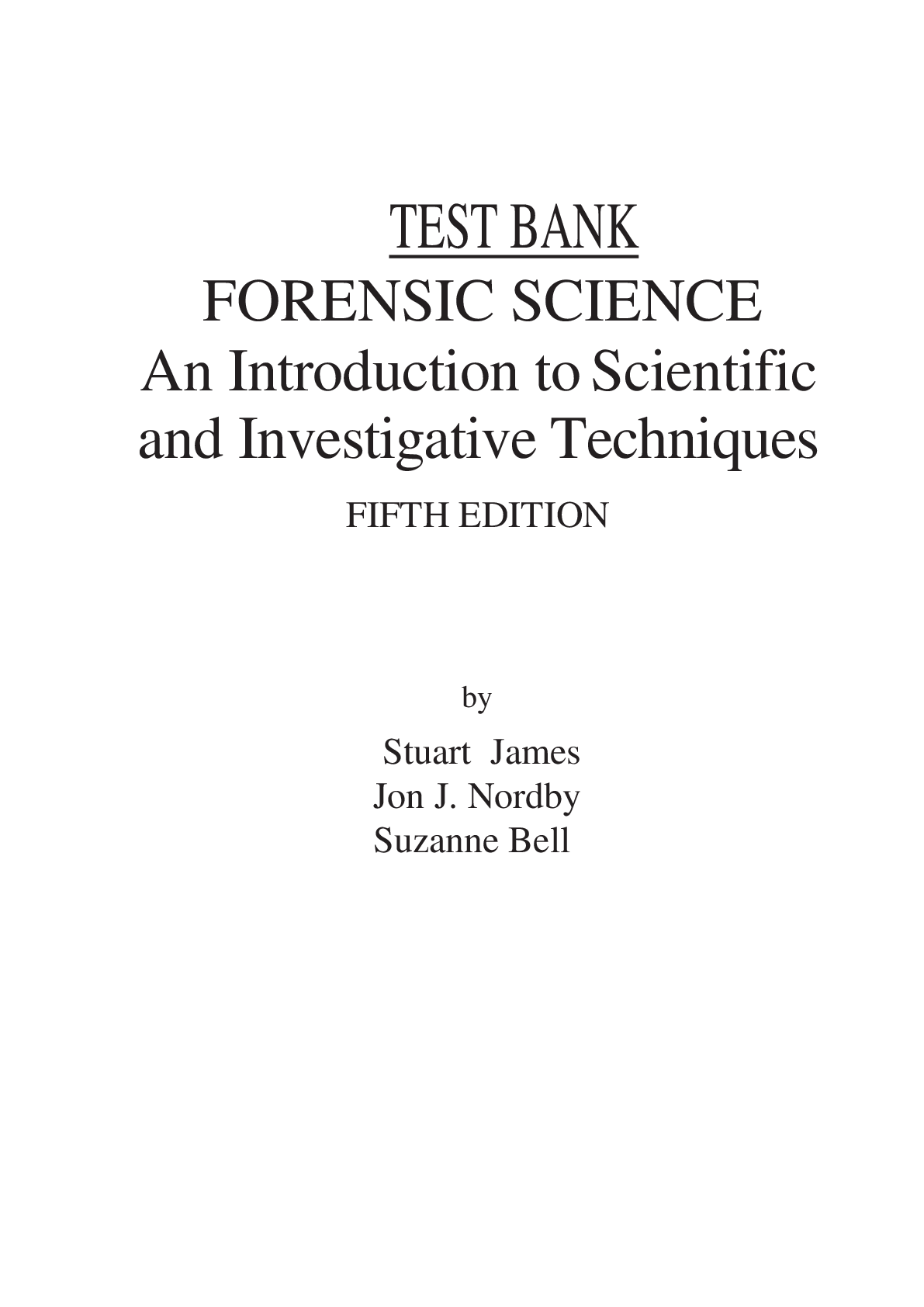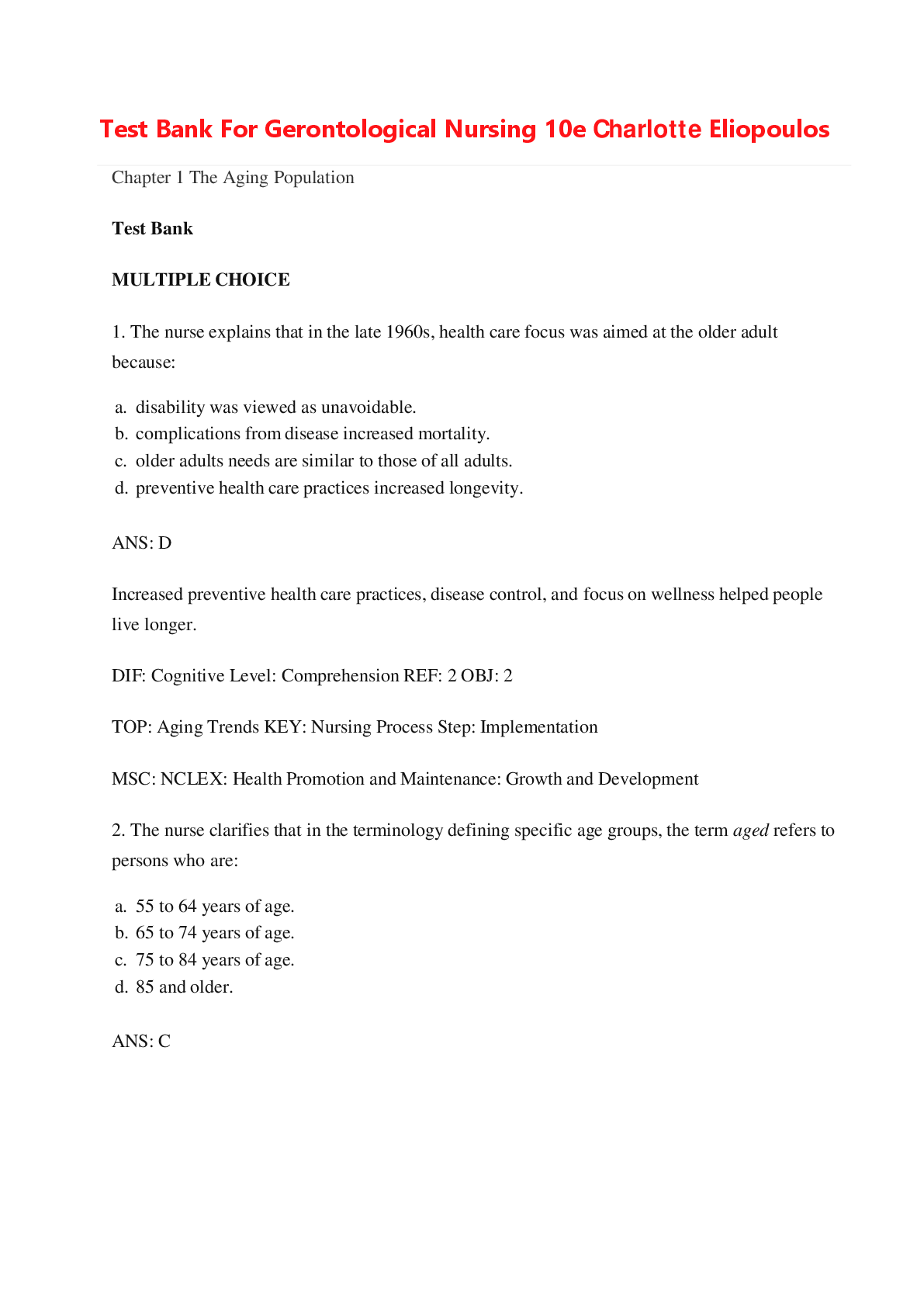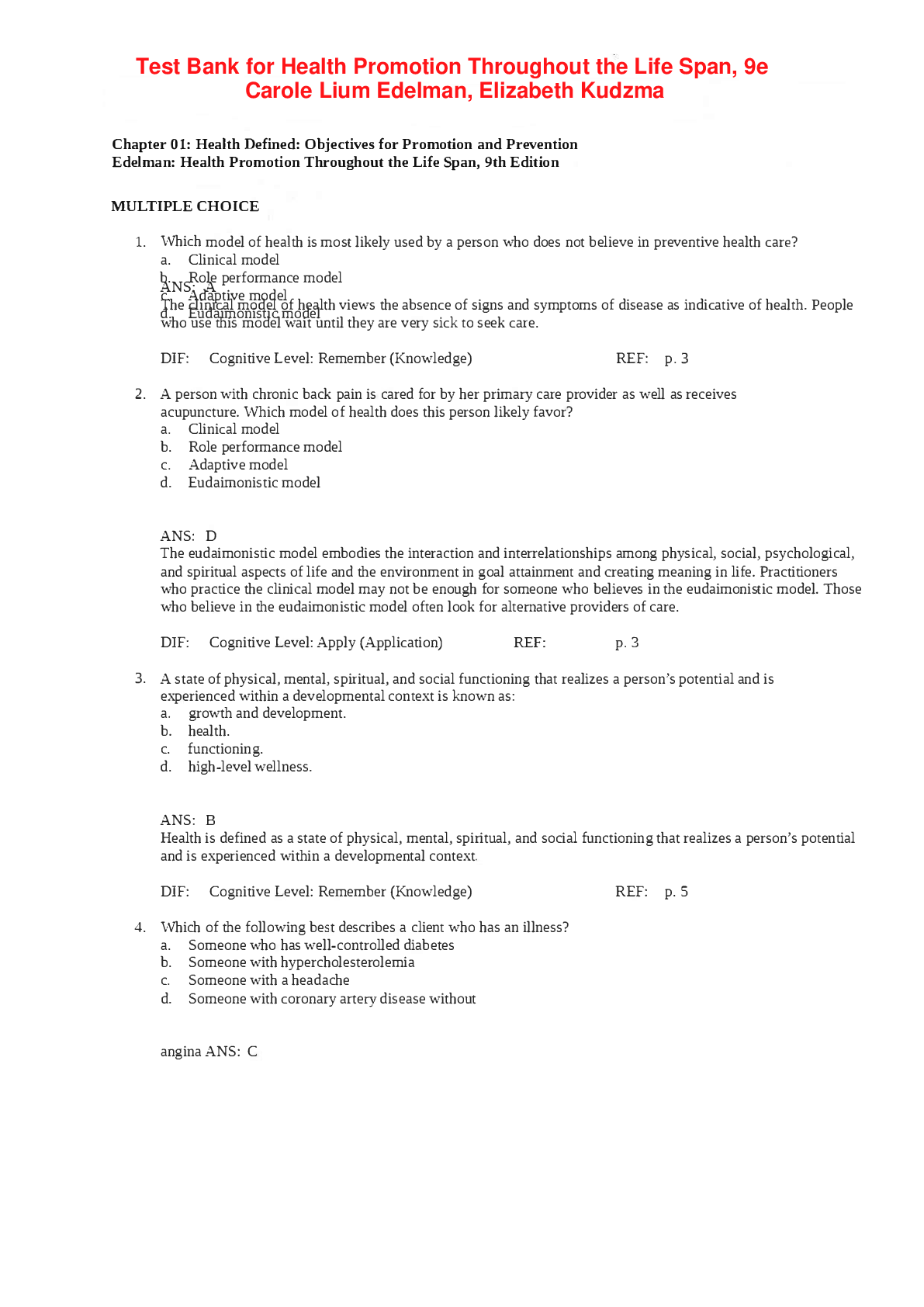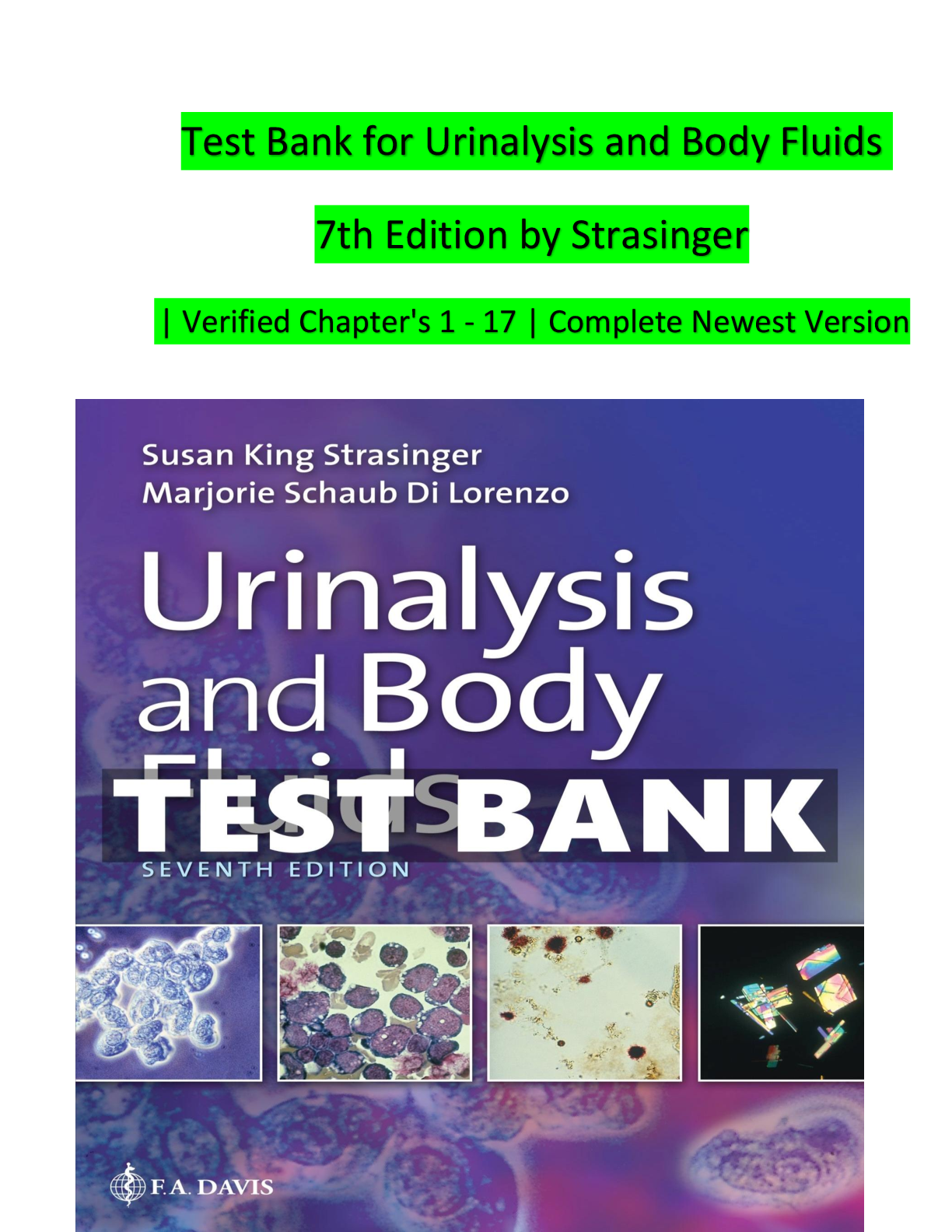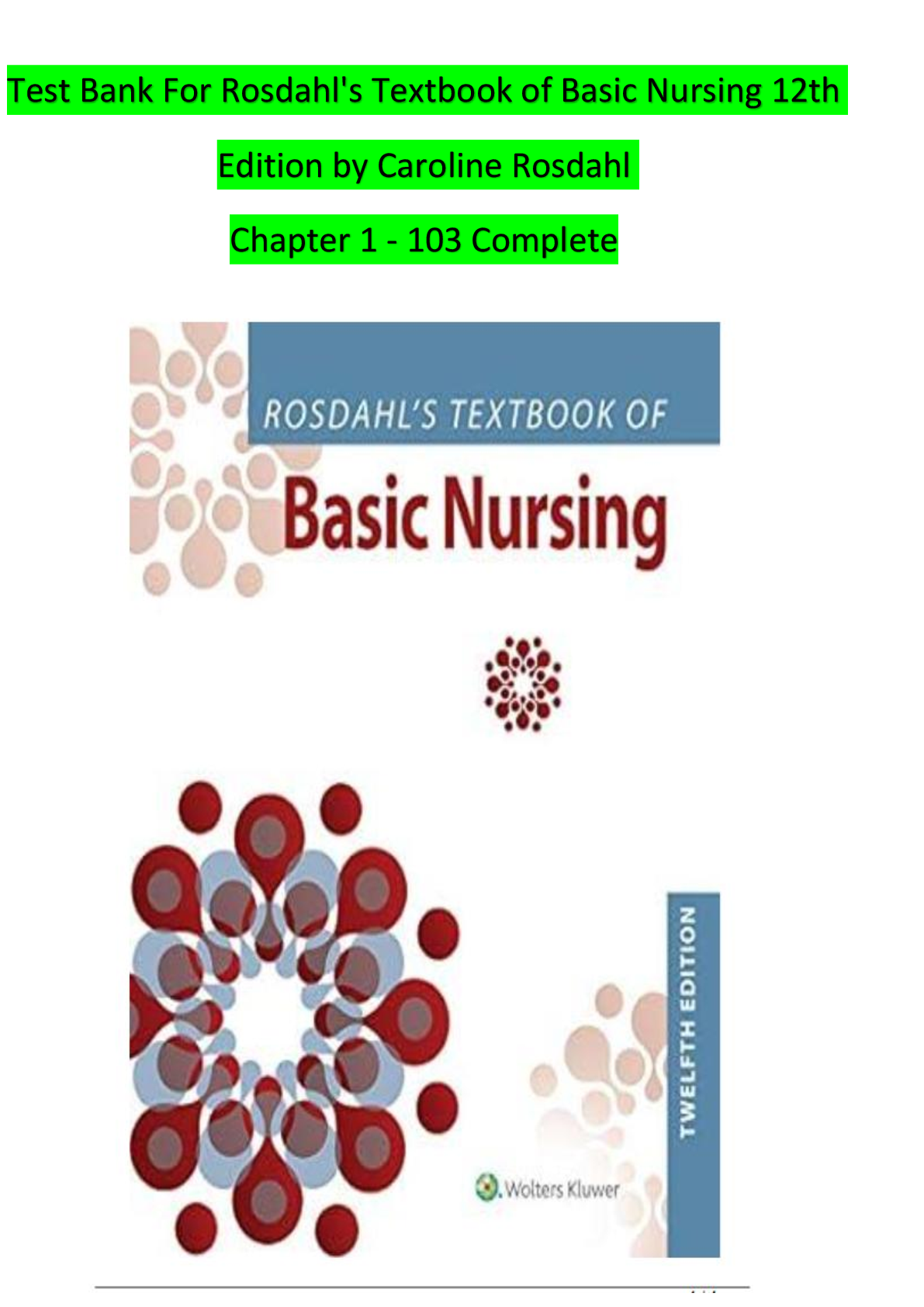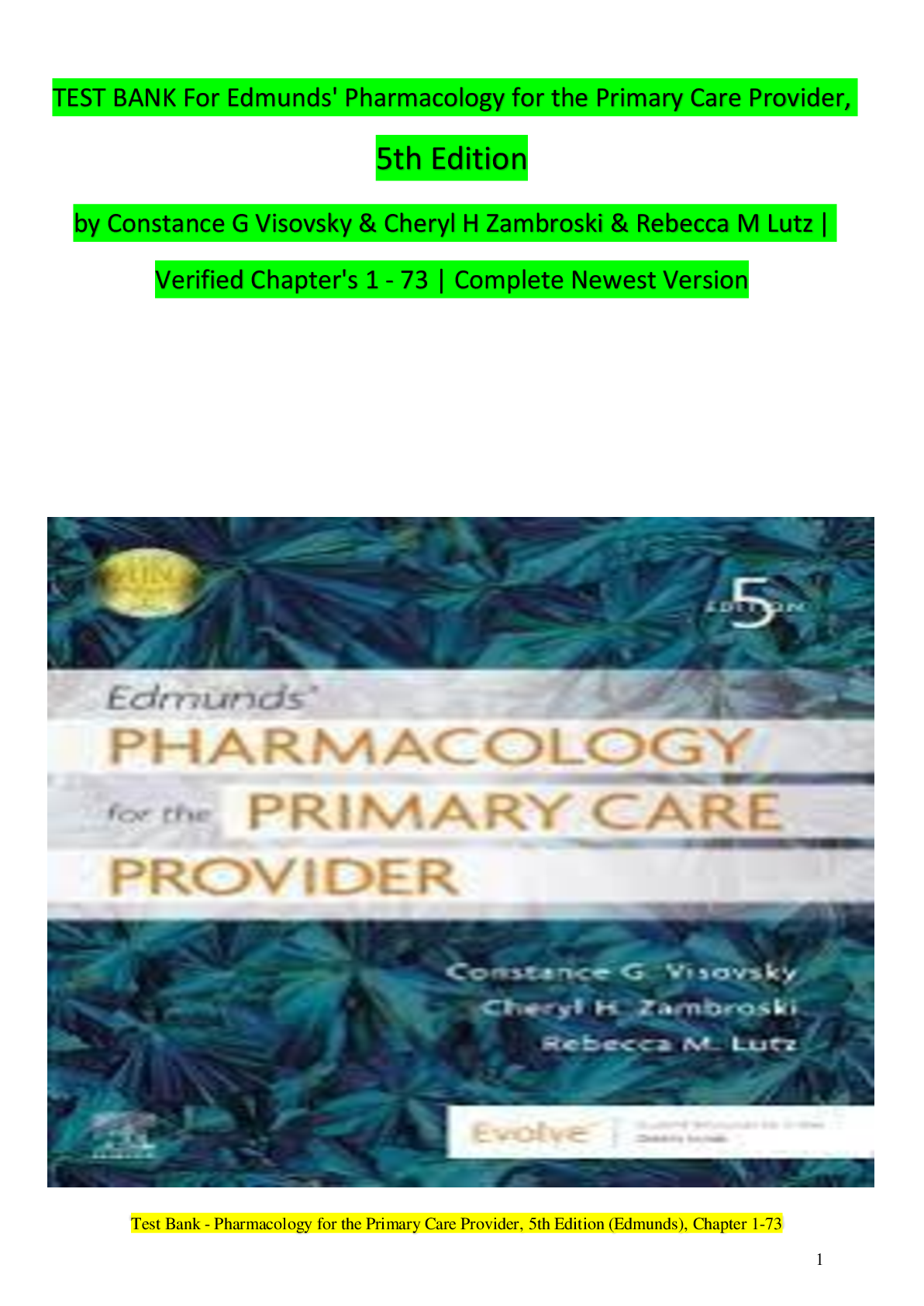*NURSING > TEST BANKS > CLAYTON’S BASIC PHARMACOLOGY FOR NURSES 18TH EDITION BY WILLIHNGANZ (All)
CLAYTON’S BASIC PHARMACOLOGY FOR NURSES 18TH EDITION BY WILLIHNGANZ
Document Content and Description Below
CLAYTON’S BASIC PHARMACOLOGY FOR NURSES 18TH EDITION BY WILLIHNGANZ-TESTBANK TEST BANK FOR CLAYTON’S BASIC PHARMACOLOGY FOR NURSES 18TH EDITION BY WILLIHNGANZ Chapter 1: Drug Definitions, Stand ... ards, and Information Sources Test Bank MULTIPLE CHOICE 1. What is the name under which a drug is listed by the U.S. Food and Drug Administration (FDA)? a. Brand b. Nonproprietary c. Official d. Trademark ANS: C The official name is the name under which a drug is listed by the FDA. The brand name, or trademark, is the name given to a drug by its manufacturer. The nonproprietary, or generic, name is provided by the U.S. Adopted Names Council. DIF: Cognitive Level: Knowledge REF: p. 1 OBJ: 2 TOP: Nursing Process Step: Assessment MSC: NCLEX Client Needs Category: Safe, Effective Care Environment 2. Which source contains information specific to nutritional supplements? a. USP Dictionary of USAN & International Drug Names b. Natural Medicines Comprehensive Database c. United States Pharmacopoeia/National Formulary (USP NF) d. Drug Interaction Facts ANS: C United States Pharmacopoeia/National Formulary contains information specific to nutritional supplements. USP Dictionary of USAN & International Drug Names is a compilation of drug names, pronunciation guide, and possible future FDA approved drugs; it does not include nutritional supplements. Natural Medicines Comprehensive Database contains evidence based information on herbal medicines and herbal combination products; it does not include information specific to nutritional supplements. Drug Interaction Facts contains comprehensive information on drug interaction facts; it does not include nutritional supplements. DIF: Cognitive Level: Knowledge REF: p. 2 OBJ: 4 TOP: Nursing Process Step: Assessment MSC: NCLEX Client Needs Category: Physiological Integrity 3. What is the most comprehensive reference available to research a drug interaction? a. Drug Facts and Comparisons b. Drug Interaction Facts c. Handbook on Injectable Drugs d. Martindale—The Complete Drug Reference ANS: B This study source was downloaded by 100000761823232 from CourseHero.com on 04-12-2021 14:25:43 GMT -05:00 https://www.coursehero.com/file/8889650/CH-1-Drug-definitions-standards-and-information-sources/ First published in 1983, Drug Interaction Facts is the most comprehensive book available on drug interactions. In addition to monographs listing various aspects of drug interactions, this information is reviewed and updated by an internationally renowned group of physicians and pharmacists with clinical and scientific expertise. DIF: Cognitive Level: ComprehensionREF: p. 3 OBJ: 3 TOP: Nursing Process Step: Assessment MSC: NCLEX Client Needs Category: Physiological Integrity 4. The physician has written an order for a drug with which the nurse is unfamiliar. Which section of the Physicians’ Desk Reference (PDR) is most helpful to get information about this drug? a. Manufacturer’s section b. Brand and Generic Name section c. Product Category section d. Product Information section ANS: B A physician’s order would include the brand and/or generic name of the drug. The alphabetic index in the PDR would make this section the most user friendly. Based on a physician’s order, manufacturer’s information and classification information would not be known. The Manufacturer’s section is a roster of manufacturers. The Product Category section lists products subdivided by therapeutic classes, such as analgesics, laxatives, oxytocics, and antibiotics. The Product Information section contains reprints of the package inserts for the major products of manufacturers. DIF: Cognitive Level: ComprehensionREF: p. 3 OBJ: 4 TOP: Nursing Process Step: Planning MSC: NCLEX Client Needs Category: Physiological Integrity 5. Which online drug reference makes available to health care providers and the public a standard, comprehensive, up to date look up and downloadable resource about medicines? a. American Drug Index b. American Hospital Formulary c. DailyMed d. Physicians’ Desk Reference (PDR) ANS: C DailyMed makes available to health care providers and the public a standard, comprehensive, up to date look up and downloadable resource about medicines. The American Drug Index is not appropriate for patient use. The American Hospital Formulary is not appropriate for patient use. The PDR is not appropriate for patient use. DIF: Cognitive Level: Knowledge REF: p. 4 OBJ: 5 TOP: Nursing Process Step: Implementation MSC: NCLEX Client Needs Category: Physiological Integrity 6. Which legislation authorizes the FDA to determine the safety of a drug before its marketing? a. Federal Food, Drug, and Cosmetic Act (1938) b. Durham Humphrey Amendment (1952) c. Controlled Substances Act (1970) This study source was downloaded by 100000761823232 from CourseHero.com on 04-12-2021 14:25:43 GMT -05:00 https://www.coursehero.com/file/8889650/CH-1-Drug-definitions-standards-and-information-sources/ d. Kefauver Harris Drug Amendment (1962) ANS: A The Federal Food, Drug, and Cosmetic Act of 1938 authorized the FDA to determine the safety of all drugs before marketing. Later amendments and acts helped tighten FDA control and ensure drug safety. The Durham Humphrey Amendment defines the kinds of drugs that cannot be used safely without medical supervision and restricts their sale to prescription by a licensed practitioner. The Controlled Substances Act addresses only controlled substances and their categorization. The Kefauver Harris Drug Amendment ensures drug efficacy and greater drug safety. Drug manufacturers are required to prove to the FDA the effectiveness of their products before marketing them. DIF: Cognitive Level: Knowledge REF: p. 4 OBJ: 8 TOP: Nursing Process Step: Assessment MSC: NCLEX Client Needs Category: Physiological Integrity 7. Meperidine (Demerol) is a narcotic with a high potential for physical and psychological dependency. Under which classification does this drug fall? a.I b.II c.III d.IV ANS: B Meperidine (Demerol) is a Schedule II drug; it has a high potential for abuse and may lead to severe psychological and physical dependence. Schedule I drugs have high potential for abuse and no recognized medical use. Schedule III drugs have some potential for abuse. Use may lead to low to moderate physical dependence or high psychological dependence. Schedule IV drugs have low potential for abuse. Use may lead to limited physical or psychological dependence. DIF: Cognitive Level: ComprehensionREF: p. 4 | p. 5 OBJ: 7 TOP: Nursing Process Step: Assessment MSC: NCLEX Client Needs Category: Safe, Effective Care Environment 8. What would the FDA do to expedite drug development and approval for an outbreak of smallpox, for which there is no known treatment? a. List smallpox as a health orphan disease. b. Omit the preclinical research phase. c. Extend the clinical research phase. d. Fast track the investigational drug. ANS: D Once the Investigational New Drug Application has been approved, the drug can receive highest priority within the agency, which is called fast tracking. A smallpox outbreak would become a priority concern in the world. Orphan diseases are not researched in a priority manner. Preclinical research is not omitted. Extending any phase of the research would mean a longer time to develop a vaccine. The FDA must ensure that all phases of the preclinical and clinical research phase have been completed in a safe manner. DIF: Cognitive Level: Knowledge REF: p. 7 OBJ: 8 TOP: Nursing Process Step: Assessment This study source was downloaded by 100000761823232 from CourseHero.com on 04 12-2021 14:25:43 GMT -05:00 https://www.coursehero.com/file/8889650/CH-1-Drug-definitions-standards-and-information-sources/ MSC: NCLEX Client Needs Category: Safe, Effective Care Environment 9. Which statement is true about over the counter (OTC) drugs? a. They are not listed in the USP NF. b. A prescription from a health care provider is needed. c. They are sold without a prescription. d. They are known only by their brand names. ANS: C OTC medications do not require a prescription. A variety of names, both generic and trade, can be used for individual drugs sold OTC. OTC drugs are listed in the USP NF. Prescription drugs require an order by a health professional who is licensed to prescribe, such as a physician, nurse practitioner, physician assistant, or dentist. DIF: Cognitive Level: ComprehensionREF: p. 2 OBJ: 2 TOP: Nursing Process Step: Planning MSC: NCLEX Client Needs Category: Physiological Integrity 10. Which is the most authoritative reference for medications that are injected? [Show More]
Last updated: 1 year ago
Preview 5 out of 621 pages

Loading document previews ...
Buy this document to get the full access instantly
Instant Download Access after purchase
Buy NowInstant download
We Accept:

Reviews( 0 )
$16.00
Can't find what you want? Try our AI powered Search
Document information
Connected school, study & course
About the document
Uploaded On
Dec 26, 2024
Number of pages
621
Written in
All
Additional information
This document has been written for:
Uploaded
Dec 26, 2024
Downloads
0
Views
20

